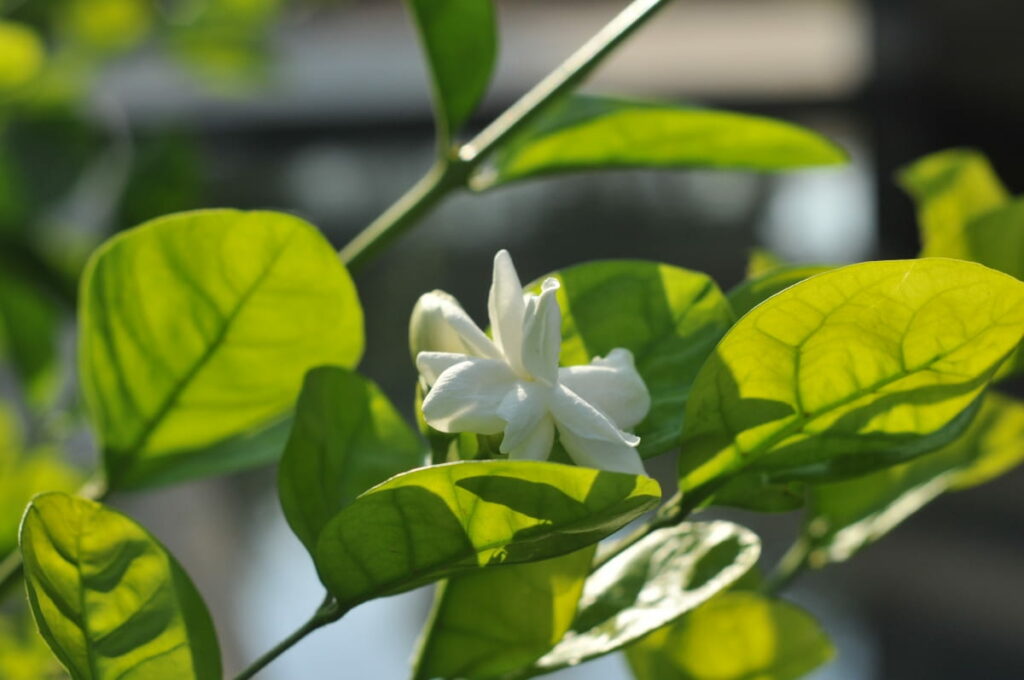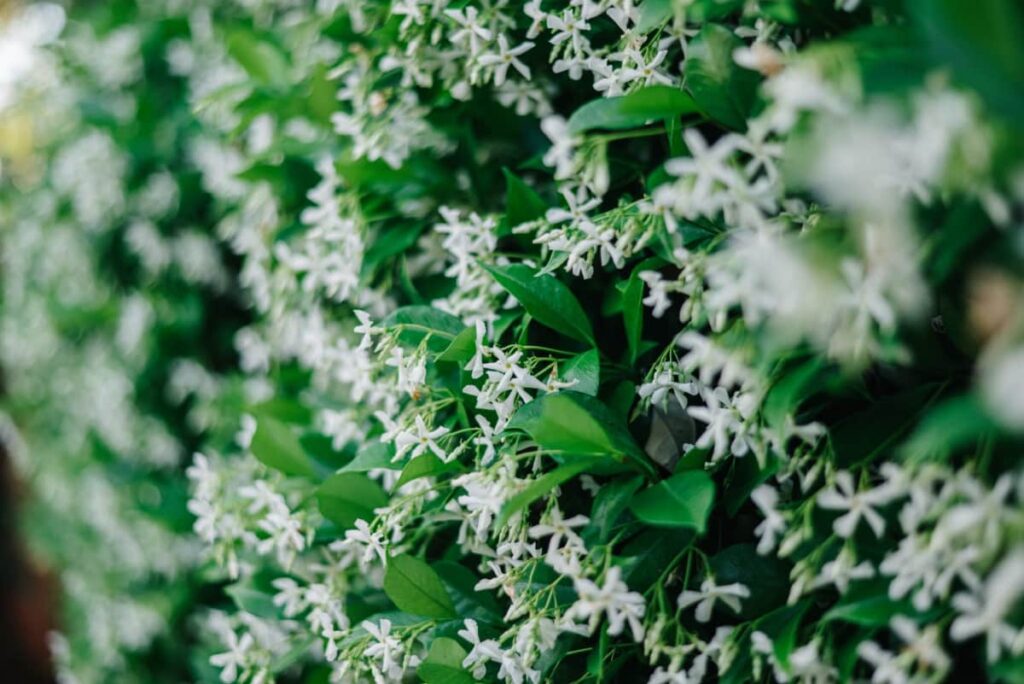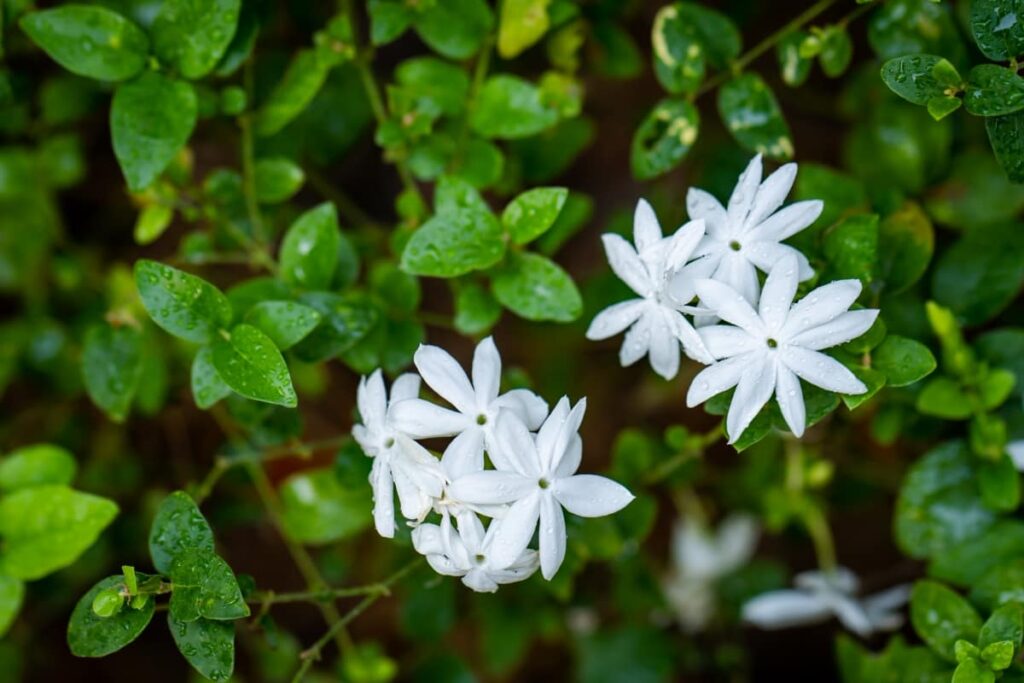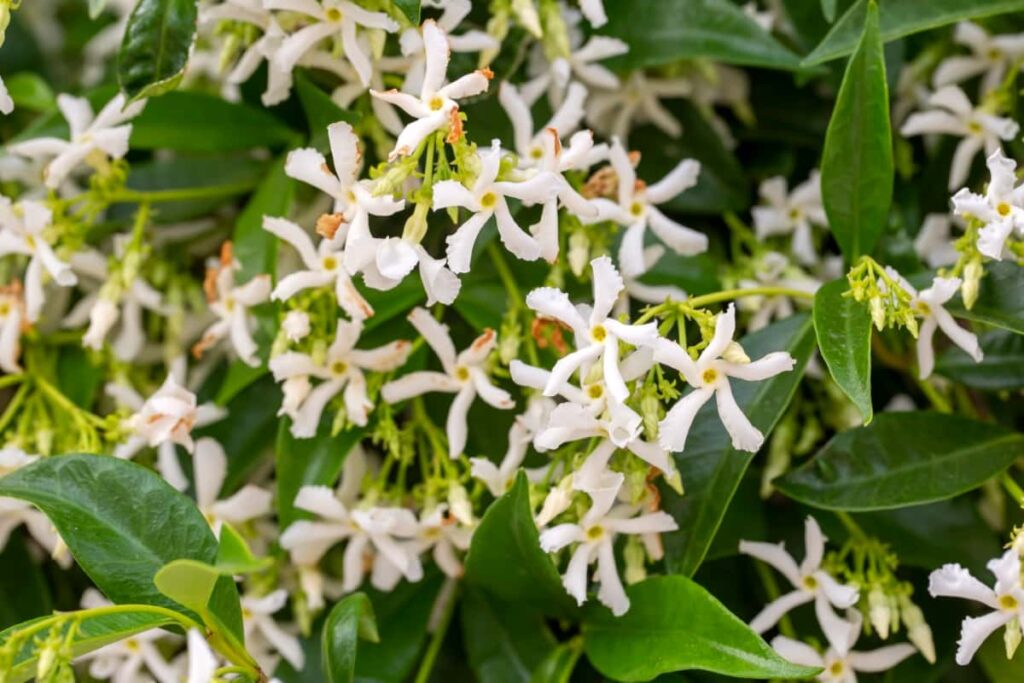This blog provides tips on how to increase the flowering of jasmine plants, ensuring they produce the desired number of flowers or stop blooming altogether. It aims to help readers enjoy lush and prolific blooms from these plants, enhancing their overall beauty.

How to Increase Flowering in Jasmine
Essential Tips for Increasing Flower Production in Jasmine Plants
To ensure your Jasmine plants produce an abundance of flowers, it’s essential to start with the basics. Adequate sunlight is crucial, so plant your Jasmine where it can receive at least six hours of sunlight daily. Well-draining soil with a somewhat acidic to neutral pH provides an ideal foundation. Water the plants consistently, allowing the soil to dry between watering to prevent waterlogged conditions.
Additionally, regular pruning is key to encouraging new growth and flower production. Remove dead or overcrowded branches, and trim spent flowers to redirect the plant’s energy towards budding. Fertilize your Jasmine plants during the growing season, using a balanced fertilizer with higher phosphorus content to stimulate flowering. These essential tips lay the groundwork for a thriving Jasmine Garden.
Unlocking the Secrets to Lush Jasmine Blooms
The first step to increasing jasmine blooms is to understand what factors affect the flowering of jasmine plants. Jasmine plants belong to tropical and subtropical regions, so they need warm and humid conditions to thrive and bloom. Jasmine plants also have different blooming seasons depending on the variety. Some jasmine plants bloom in spring, some in summer, and some in winter.
Therefore, you need to know the type of jasmine plant you have and when it is supposed to bloom. Another factor that influences the flowering of jasmine plants is the amount of light they receive. Jasmine plants need at least six hours of direct sunlight per day to produce flowers. If your jasmine plant is in a shady spot, it may not get enough light to trigger blooming.
Proven Techniques to Boost Flowering in Jasmine
- Water your jasmine plant regularly and deeply, but avoid overwatering or letting it sit in soggy soil to prevent attack of root rot and fungal diseases.
- Apply Fertilizer to your jasmine plant every two weeks with a balanced fertilizer and once a month in winter to provide it with the necessary nutrients for more flowers.
- Prune your jasmine plant after it finishes blooming or in late winter/early spring to remove dead or diseased branches, improve air circulation, and encourage new flowering shoots. Cut back about one-third of the old growth and shape the plant as desired.
- Pinch off the tips of new shoots during the growing season to promote branching and bushiness. Pinching off the tips will also prevent your jasmine plant from becoming leggy or spindly and stimulate more flower buds.
- Remove faded or spent flowers regularly to prevent seed formation and prolong blooming. Removing faded flowers will also keep your jasmine plant looking neat.
The Role of Soil, Water, and Sunlight in Enhancing Jasmine Flowering
Soil: The best soil for jasmine plants is rich in organic matter, well-drained, slightly acidic (pH 6.0-7.0), and loose. You can enhance your soil by adding compost, peat moss, perlite, or vermiculite. You can also use a potting mixture designed for acid-loving plants if you grow your jasmine plant in a container.
Water: The best water for jasmine plants is rainwater or filtered water that is free of chlorine and fluoride that can damage your plant. You can harvest rainwater in a barrel or use a filter attachment on your faucet. You can also let tap water sit overnight before using it to allow some of the chemicals to evaporate.
Sunlight: The best sunlight for jasmine plants is bright but indirect sunlight that does not scorch or burn your plant. You can place your jasmine plant near a south-facing window or under a pergola or lattice that provides some shade. You can also use a sheer curtain or a shade cloth to filter out some of the harsh rays.
In case you missed it: Top 4 Jasmine Flowering Plants for Fragrance: How to Grow, Care, and Make Bushy for More Blooms

Cultivating Jasmine Plants for Maximum Flowering
Location: To grow a jasmine plant indoors, ensure it meets light and temperature requirements and protects it from pests and diseases. Indoors, use a humidifier, fan, or heater for humidity and temperature control. Outdoors protect it from frost, strong winds, and extreme heat or cold using a frost cloth, windbreak, or shade cloth. Both indoor and outdoor locations are crucial for optimal growth.
Container: The ideal container for your jasmine plant is made of breathable material, like terracotta or ceramic. It is big enough to fit its root system with drain holes at the bottom. You need to repot your jasmine plant every two to three years or when it becomes root-bound. You also need to clean and sterilize your container before using it to prevent the spread of pests and diseases.
Support: The best support for your jasmine plant is one that allows it to climb and spread its branches and flowers. You can use a trellis, an arbor, a fence, or a wall to support your jasmine plant. You can also use stakes, wires, or strings to train your jasmine plant in the desired shape or direction. You need to tie your jasmine plant loosely and gently to avoid damaging its stems or restricting its growth.
Companion plants: The best companion plants for your jasmine plant are those with similar needs and benefits, such as lavender, rosemary, mint, marigold, nasturtium, and geranium, which can attract beneficial insects, repel pests, improve soil quality, and enhance its beauty.
Strategies for Prolific Blooming in Jasmine Plants
Choosing the right jasmine plant depends on your climate and purpose. There are hundreds of varieties with different characteristics, such as fragrance, color, and suitability for specific uses. For tea or perfume, Arabian jasmine (Jasminum sambac) or Spanish jasmine (Jasminum grandiflorum) are suitable. Winter jasmine (Jasminum nudiflorum) or star jasmine (Trachelospermum jasminoides) are suitable for year-round enjoyment.
To prepare for blooming, jasmine plants require a period of reduced light, temperature, and water, typically in winter or early spring. Inducing dormancy involves moving the plant to a cooler, darker location, reducing watering and fertilizing, and pruning back old growth to store energy and resources.
To initiate blooming in your jasmine plant, change the light and temperature conditions, typically in spring or summer, by moving the plant to a warmer, brighter location, increasing watering and fertilizing, and pinching off new growth, which will stimulate the plant to produce flower buds and open them.
To preserve the quality and fragrance of jasmine flowers, harvest them early in the morning before they wilt or fade. Use sharp scissors or a knife to cut at the bottom of the stem, and handle them gently, avoiding bruising or crushing. This ensures the flowers are harvested at the right time and manner.
Advanced Techniques for More Flowers in Jasmine Plants
Taking Jasmine’s gardening tips to the next level involves adopting advanced techniques tailored to your specific plant’s needs. Consider implementing a foliar feeding regimen, where a water-soluble fertilizer is applied directly to the leaves. This technique allows the plant to absorb nutrients quickly, promoting faster growth and more abundant flowering. Ensure that foliar feeding is done during the cooler parts of the day to prevent scorching.
Moreover, exploring the benefits of companion planting can enhance the overall health and blooming capacity of Jasmine plants. Companion plants like marigolds and lavender can help deter pests, while others, such as legumes, can contribute nitrogen to the soil, enriching it for improved Jasmine flowering. Experiment with companion planting to discover combinations that work best for your Jasmine Garden.
Tailored Approaches for Improved Flowering
To optimize Jasmine plant care, consider the plant’s specific needs and adjust your practices accordingly. Select the right soil, provide proper sunlight, and consider water quality. If tap water is hard or contains high chlorine, use filtered or rainwater. Water quality affects soil pH and nutrient absorption, impacting plant health and flowering.
In case you missed it: Jasmine Cultivation Information Guide

Timing is crucial for improved flowering. Monitor weather conditions and adjust your care routine accordingly. Increase watering frequency during extreme heat to prevent stress, and reduce it in cooler months to avoid waterlogged soil. By adapting care practices to changing seasons, you can optimize Jasmine flowering throughout the year.
Timing, Pruning, and Fertilization for Best Jasmine Blooms
The trifecta of timing, pruning, and fertilization holds the key to achieving the best Jasmine blooms. As mentioned earlier, timing is critical for both pruning and fertilization. Properly timed pruning encourages the growth of new buds, while well-timed fertilization ensures a consistent supply of nutrients for optimal flowering. Coordination of these practices maximizes the plant’s potential for lush and abundant blossoms.
When it comes to pruning, focus on discarding spent flowers regularly. This not only enhances the aesthetic appeal of the plant but also encourages the development of new buds. Use sharp, clean pruning shears to make precise cuts, reducing the risk of harm to the plant. Additionally, avoid heavy pruning in the fall, as this may remove potential buds for the next blooming season.
In case you missed it: How to Make Rose Plants Bushy and Flowers Bigger: Propagation, Fertilizers, Pruning, Planting, and Care

Conclusion
Maximizing Jasmine plant flowering requires a combination of science and care. Understanding soil, water, and sunlight is crucial for overall health and blooming capacity. Advanced techniques, strategic pruning, and well-timed fertilization can unlock the secrets to lush blooms and create a garden filled with the enchanting fragrance of these exquisite flowers.
- Management Pests and Diseases in Your Cotton Field
- Sheep Farming Business Plan for Beginners
- Aquaponic Farming at Home: A Step-By-Step Guide
- Profitable Village Farming Business Ideas in 2024
- High-Yield Aquaculture: Fast-Growing Fish for Farming
- Effective Fish Pond Construction Techniques for Beginners
- Irrigation and Water Management in Pineapple Farming
- Blossom to Harvest: Mastering Flowering and Pollination in Papaya Farming
- Pig Fattening Essentials: From Selection to Sale for Beginners
